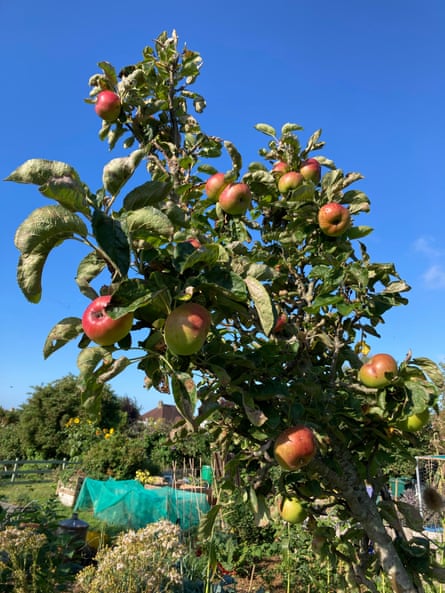PROTECT YOUR DNA WITH QUANTUM TECHNOLOGY
Orgo-Life the new way to the future Advertising by AdpathwayIt’s a mast year on the allotment. Branches heave with apples, plums and pears, while sloes, hips, hazelnuts and haws ripen in the hedge. I greet friends with berries, juice and jam; I’ve taken plums to the pub.
Such abundance is welcome. The wildlife has feasted too, and I’ve saved apples in case of waxwings (do waxwing winters track mast years?). Eventually, the fruit will be finished by detritivores such as earthworms, who will transform it into nutrients to be reabsorbed by the trees. I love this cycle of life.
Mast years are a mystery. Derived from Old English, “mast” is traditionally used to describe the fruit and nuts of forest trees, but today can describe any tree’s fruit or nut. The mystery of mast years is that they tend to happen across the country, so can’t solely be attributed to weather, and some scientists think the trees might communicate with each other to collectively decide when to push the boat out. Do they really communicate via the “wood wide web”, an underground network of fungi and roots that would have to cross motorways and water bodies, and navigate sewerage pipes and broadband cables across the British Isles? Or is it something simpler, such as pollen coupling, where trees flower at the same time to maximise fertilisation and fruit production?

The reason why mast years happen is less complicated. By producing, potentially, too much mast for animals to eat, the tree increases its chances of continuing its line, with more seed left to grow into new trees. Simple as that.
I wonder, though, if there’s something more magical at play. After two consecutive wet years, with few insects or fruit, could the trees have seized the recent dry, mild spring and flowered their socks off for the insects? Could symbiosis extend beyond chance, and could it ever be plausible that flowers and pollinators are consciously helping each other out? I like to think so.
Here on the allotment, the last of the year’s butterflies drink juice from the last of the plums, while field mice cache their stones under a log. At home I continue to bake, juice, dehydrate and freeze apples. What will next year bring?


 2 days ago
1
2 days ago
1





















 English (US) ·
English (US) ·  French (CA) ·
French (CA) ·